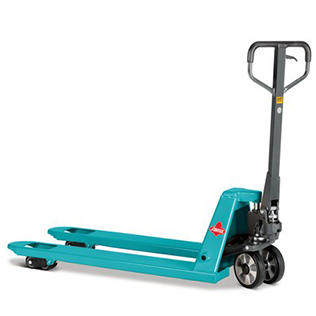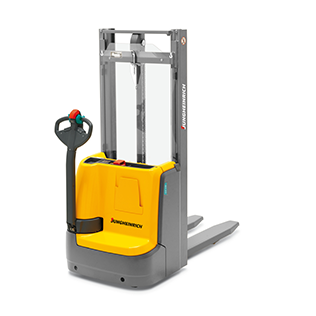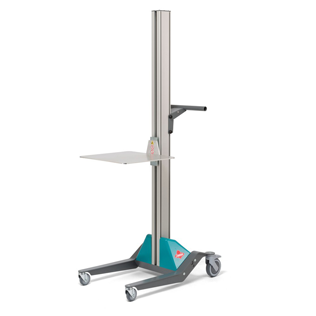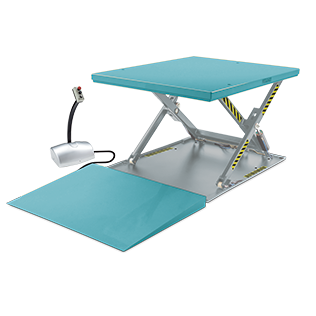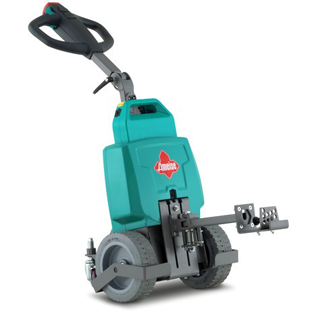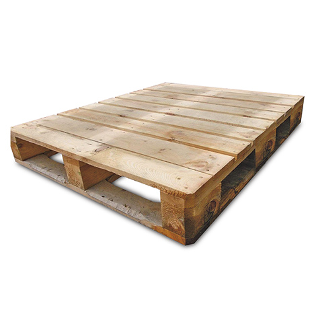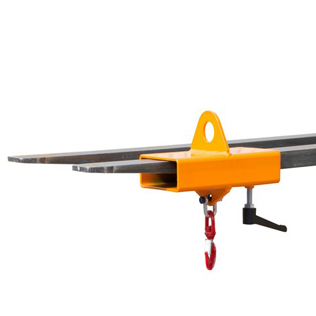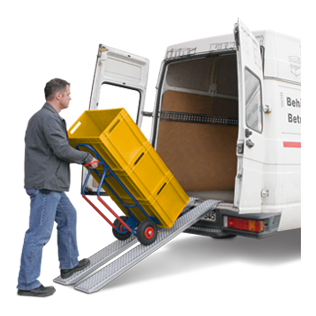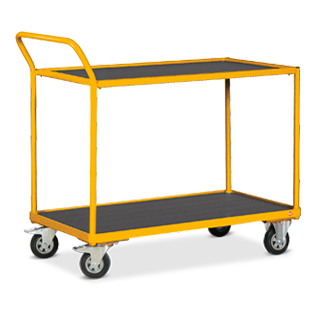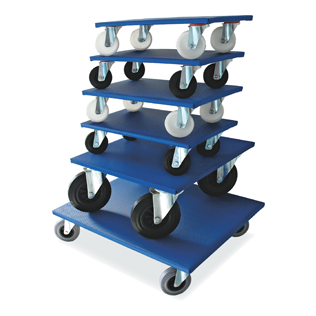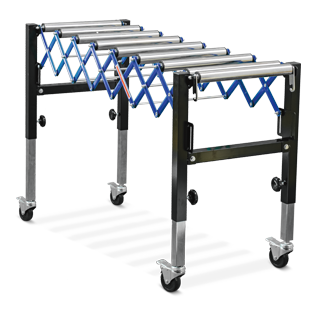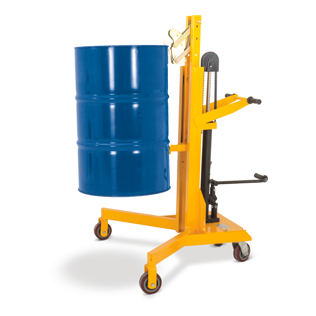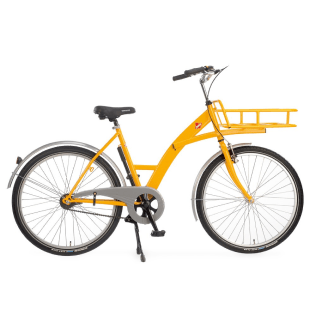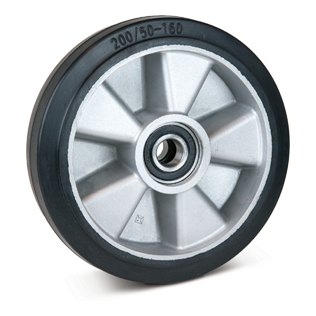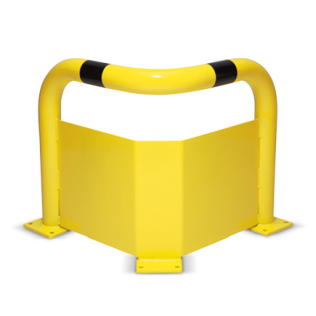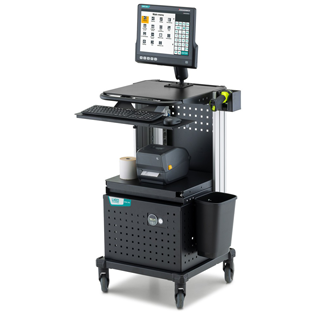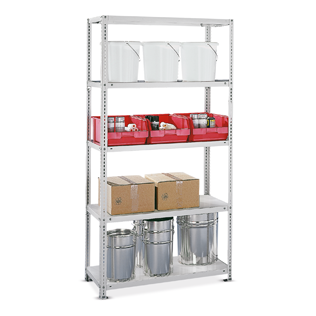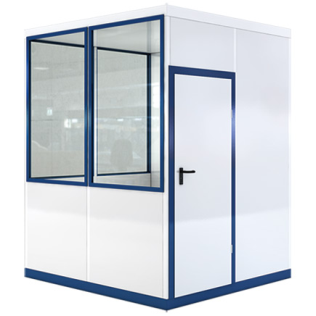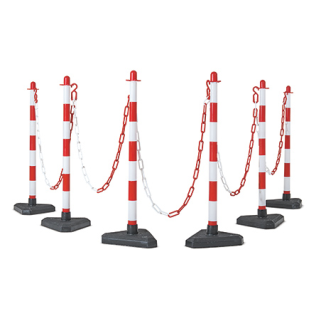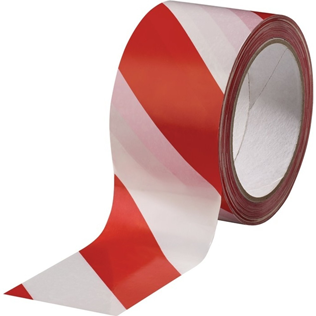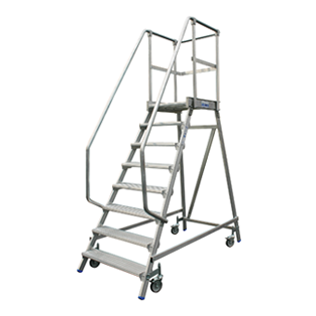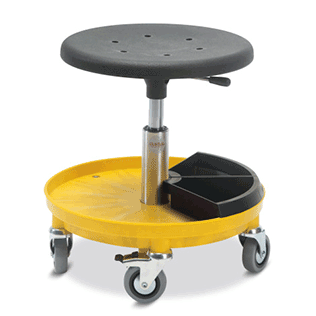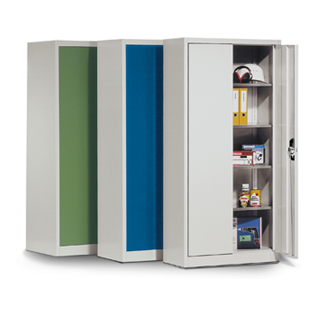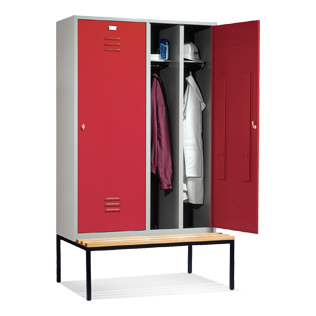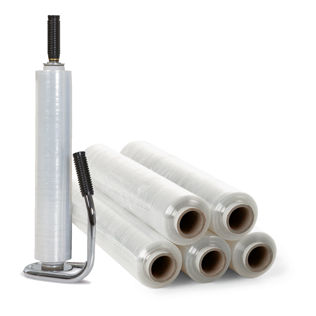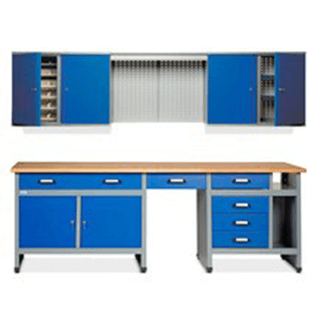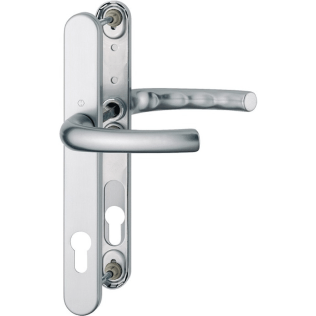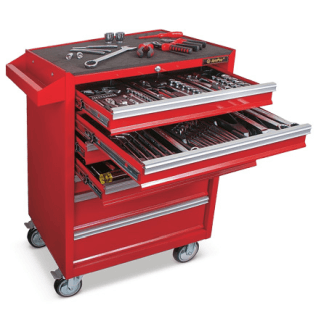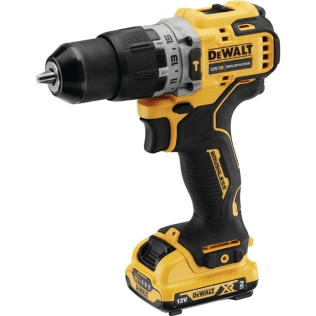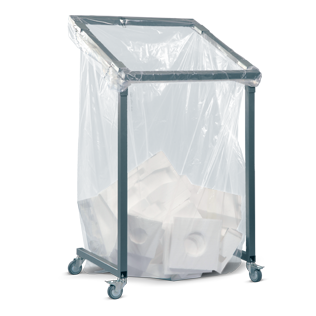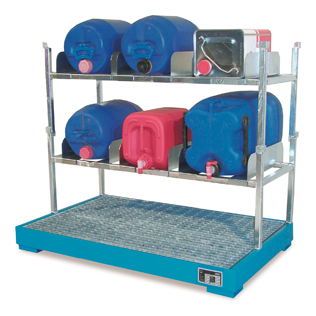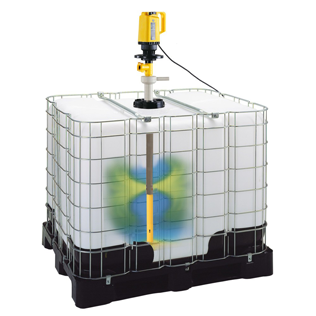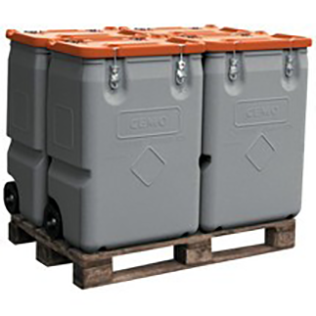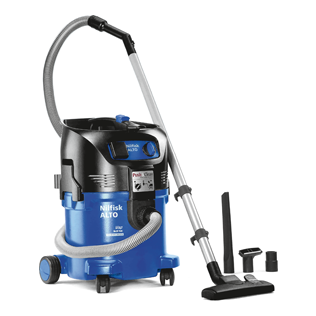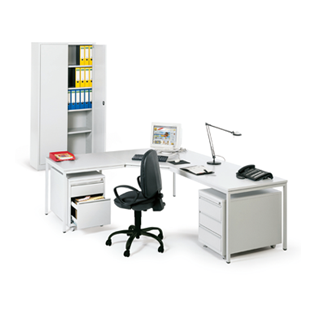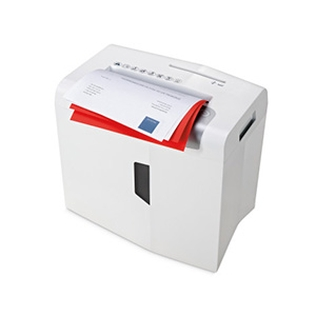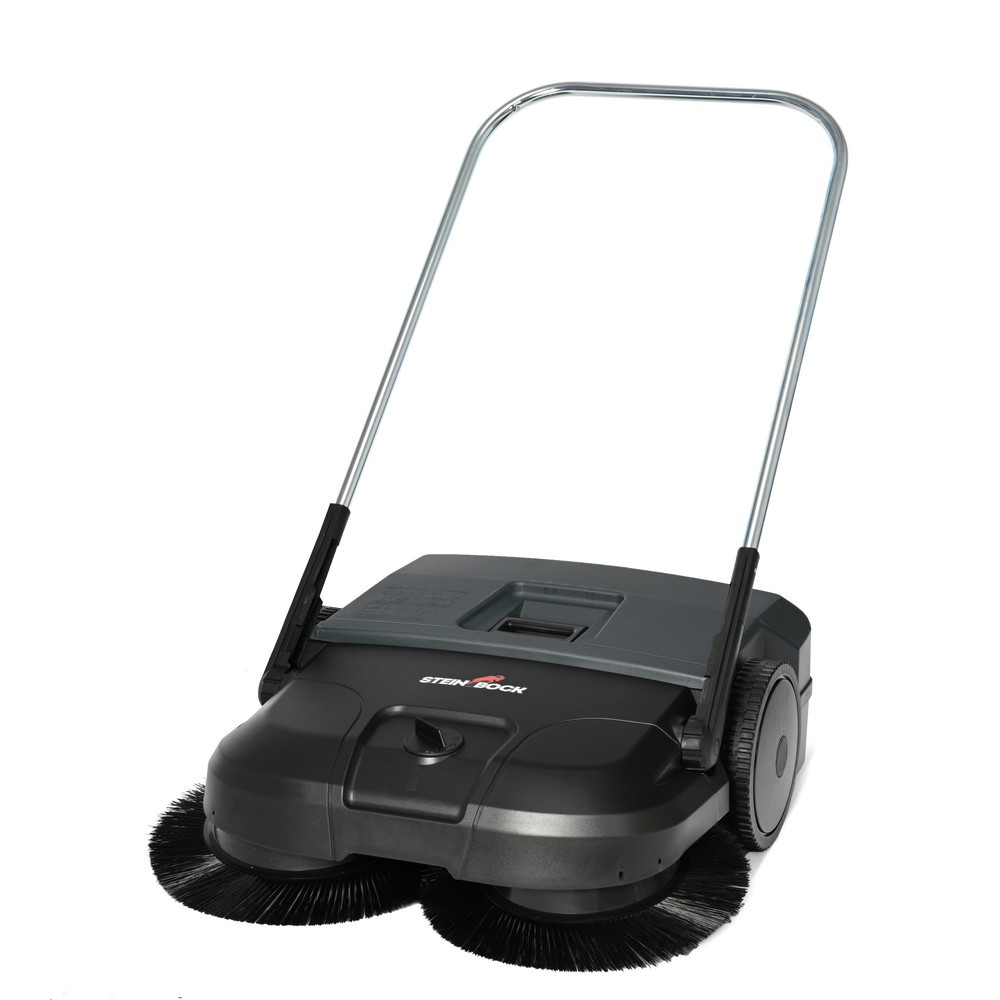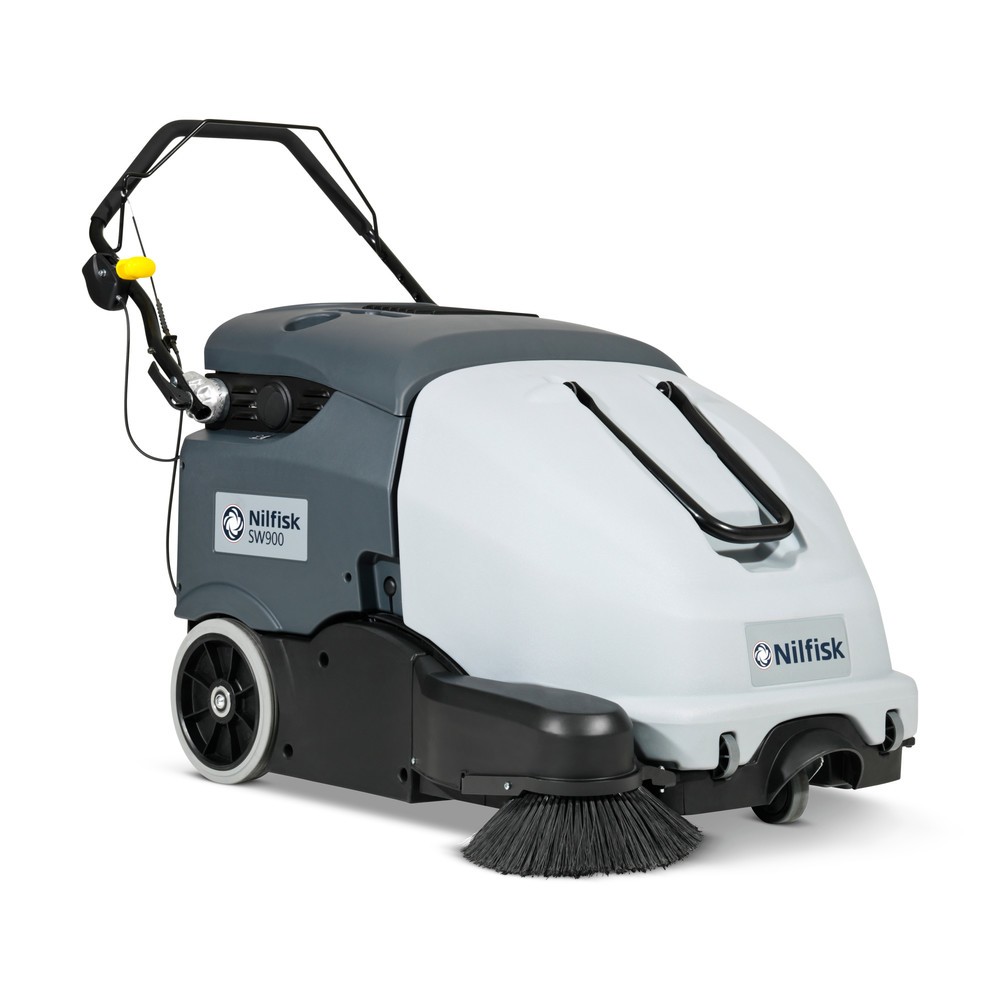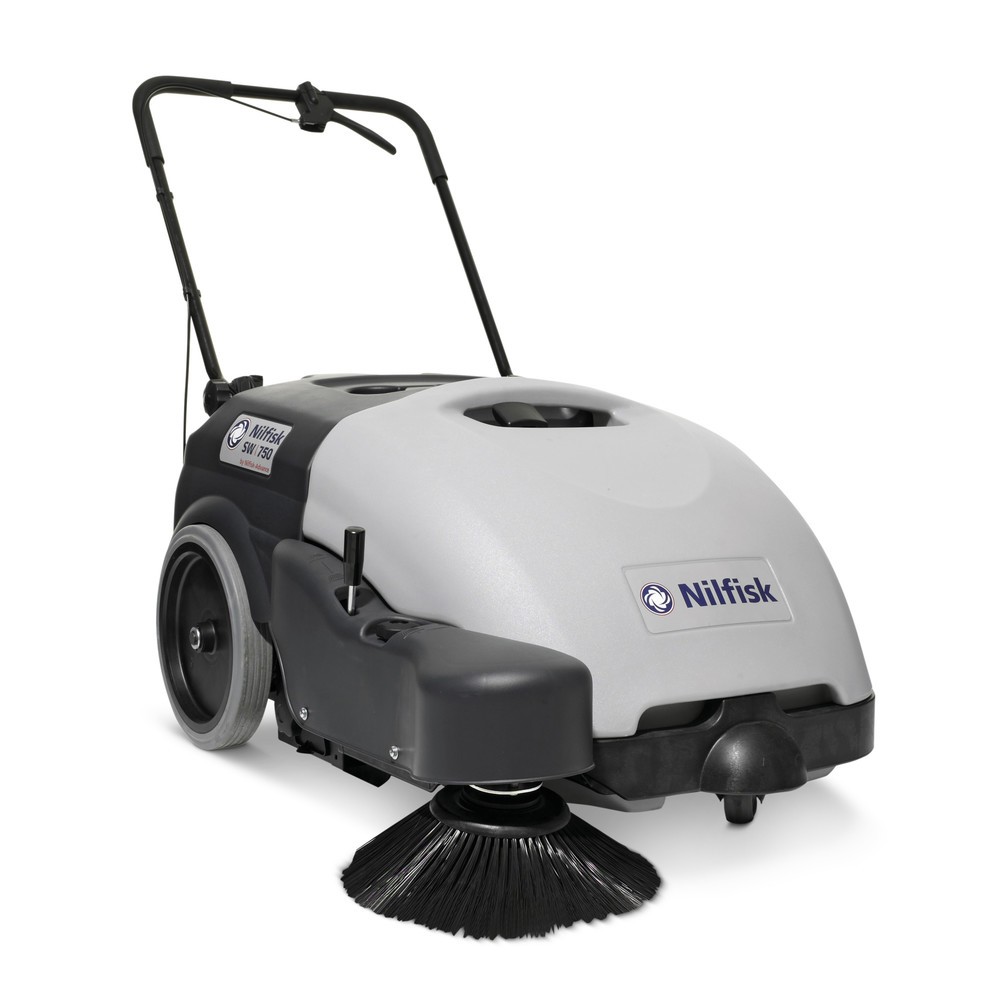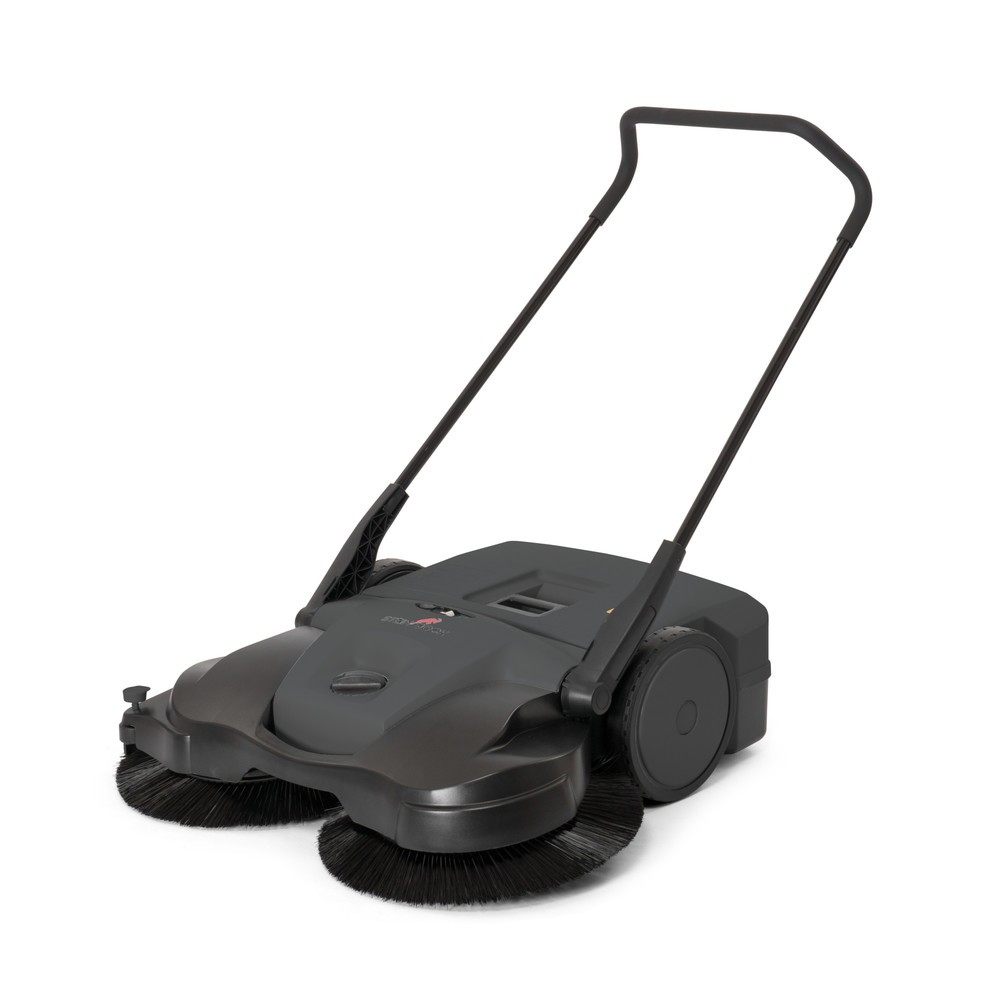Hand sweepers - Manual assistance for cleaner floors
Manual floor sweepers can reliably help you to remove dirt particles from the floor, both indoors and outdoors. With our buying guide, you can discover which hand sweeper model best suits your needs.
1. What is a hand sweeper and how does it work?
Hand sweepers are compact sweeping devices that allow you to effectively remove dirt from small to medium-sized areas. The narrow cleaning machines are moved by hand, being pushed in front of the operative using a handle. Due to the pushing dynamic, the brush rollers and disc brooms attached to the device move mechanically. The dirt is transported to the centre of the hand sweeper by means of inward rotation and directed into the collection container via the sweeper-like rubber lip.
A manual floor sweeper is best used to clean even and dry areas. If the surface is too wet, this can limit the pick-up capacity of the device. In addition, we recommend that you maintain a straight and even working path to achieve the most effective cleaning result. Sharp curves should be avoided, with the best cleaning results coming from larger, sweeping arcs.
2. How to find a suitable hand sweeper
For different surfaces such as asphalted paths, paved driveways, or concrete parking areas, you need hand sweepers with the appropriate features. Also, not every manual sweeper is suitable for removing certain types of dirt. Therefore, you should define your needs and the external conditions before making a purchase. Our five-point list can help you find a suitable sweeper:
- What quantities of dirt and types of dirt do you want to remove?
- How large is the area to be cleaned?
- Do you want to clean indoor or outdoor areas?
- How often will the manual floor sweeper be used?
- What working width is needed?
Substrates and types of dirt
Depending on the model and sweeping system, you can use a manual walk behind sweeper to clean smooth and even floors made of concrete, asphalt and stone, as well as tiles, and carpeting. This means that our versatile sweepers can be used in warehouses and offices, for example, or potentially on outdoor surfaces and paths. For very large and extensive areas or uneven paths we recommend electric sweepers or devices with an adjustable height sweeping system.
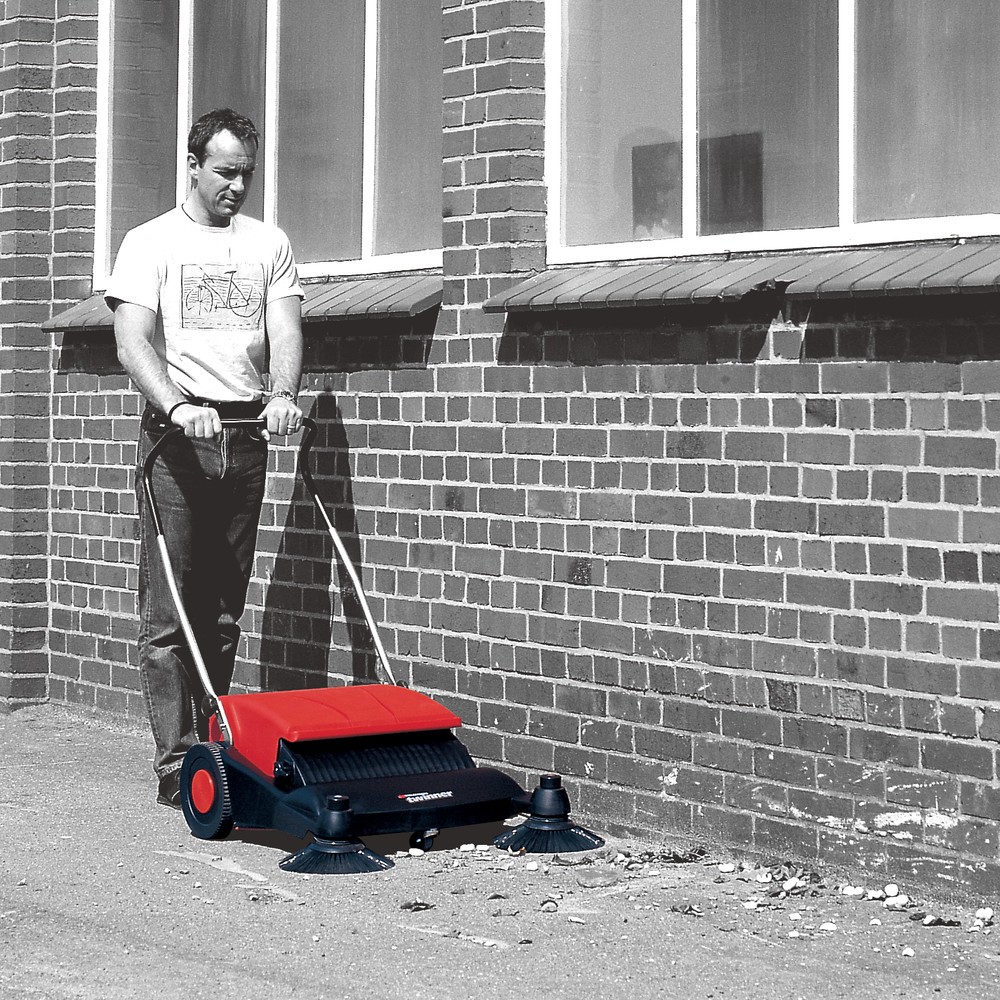
At Jungheinrich PROFISHOP you can get manual push sweepers for areas with a light to moderately heavy degree of soiling. With the help of these devices, you can quickly and easily remove:
- Dust and crumbs
- Sand and dry substrate
- Pebbles and small stones
- Cigarette butts
- Leaves, acorns, chestnuts, etc.
With some hand sweepers, you can even remove thin layers of snow from your driveway or pavement. However, cleaners must be specially designed for this and need to be weatherproof. For large amounts of snow or very wet dirt, robust all-season sweepers are more suitable.
Performance
The performance of a hand sweeper is determined by different features:
- Area to be cleaned: Since hand sweepers do not have an engine, they are more suitable for cleaning smaller areas. However, sweepers can be expected to clean areas up to 3,500 m²/hour. We recommend that you maintain a steady and constant walking speed. In this way, you ensure that the sweeping rollers or disc brooms rotate at the correct speed and that all dirt particles are reliably captured by the sweeping system. In addition, at this cleaning speed, loose dust is minimised.
- Sweeping width: How much dirt you can remove at once with a hand sweeper depends on the sweeping width of the device. This ranges from 150 mm for small carpet sweepers to 1000 mm for larger hand sweepers with two side brushes. Generally, models with side brushes have the largest working width.
- Dirt bin size: The performance of the hand sweeper is also determined by the size of the dirt bin. At Jungheinrich PROFISHOP you can buy manual sweepers with a bin volume between 0.5 and 50 litres. In most cases, the container is made of impact-resistant material. In addition, some models are equipped with a second collection container. This allows you to sweep up dirt even when moving backwards.
Roller system / sweeping system
Manual sweepers are available with different sweeping systems:
- Our entry-level models for sporadic use on low-pile carpets and smooth floors are equipped with one or two roller brushes. The rotating movement picks up the dirt from below and transports it upwards into the collection container.
- In addition, there are larger versions of hand sweepers with one or two side brushes in the front area. The side brushes reliably sweep all dirt particles horizontally into the sweeper's catcher.
- At Jungheinrich PROFISHOP you will also find hand sweepers with side brushes and a central brush roller rotating together. With these machines, dirt that has been driven over is first transported to the rear by side brooms to the brush roller. This transports the dirt vertically into the collection container. The side brushes also allow you to increase the sweeping width and easily remove deposited dirt from corners, wall, or kerb edges. Hand sweepers with this sweeping system have the highest surface cleaning performance.
3. Types of hand sweepers
There are three types of industrial push sweepers designed for various applications and types of dirt.
| Parameters / Sweeper models | Mini hand sweepers | Medium hand sweepers | Large professional hand sweepers |
|---|---|---|---|
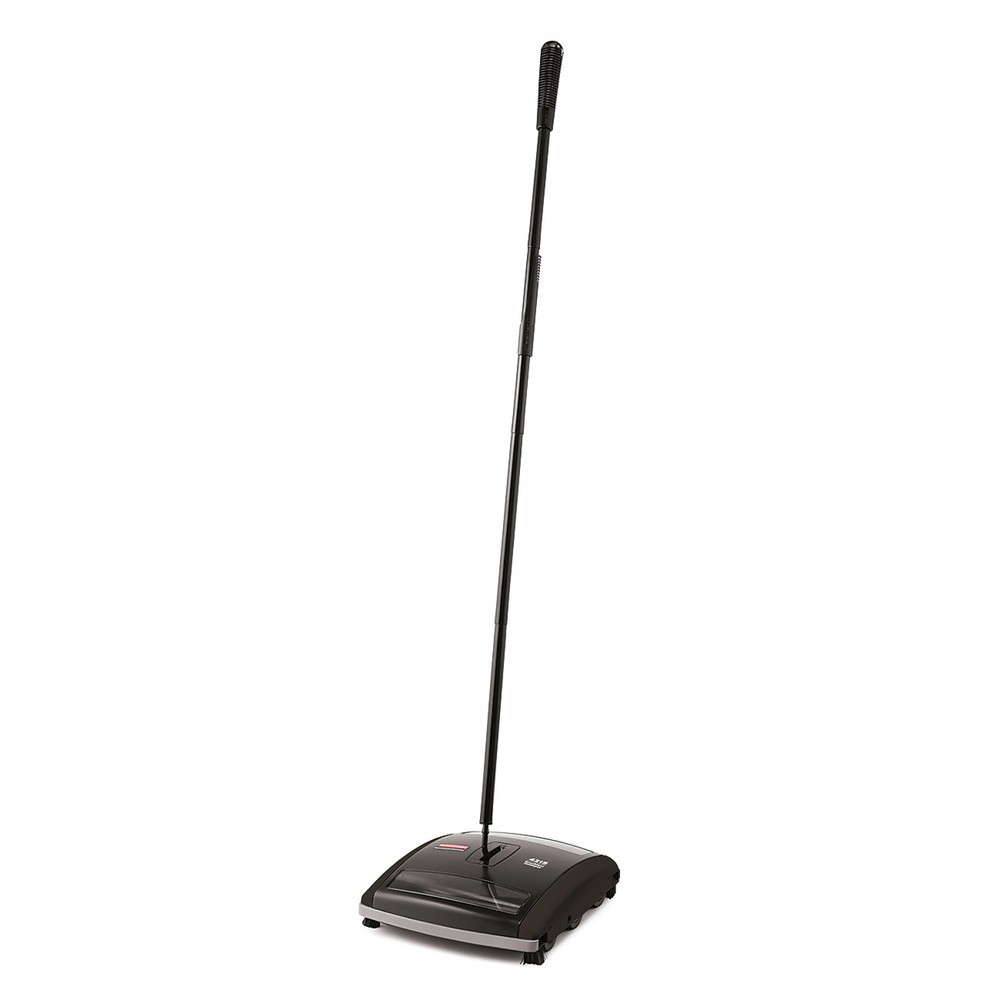 | 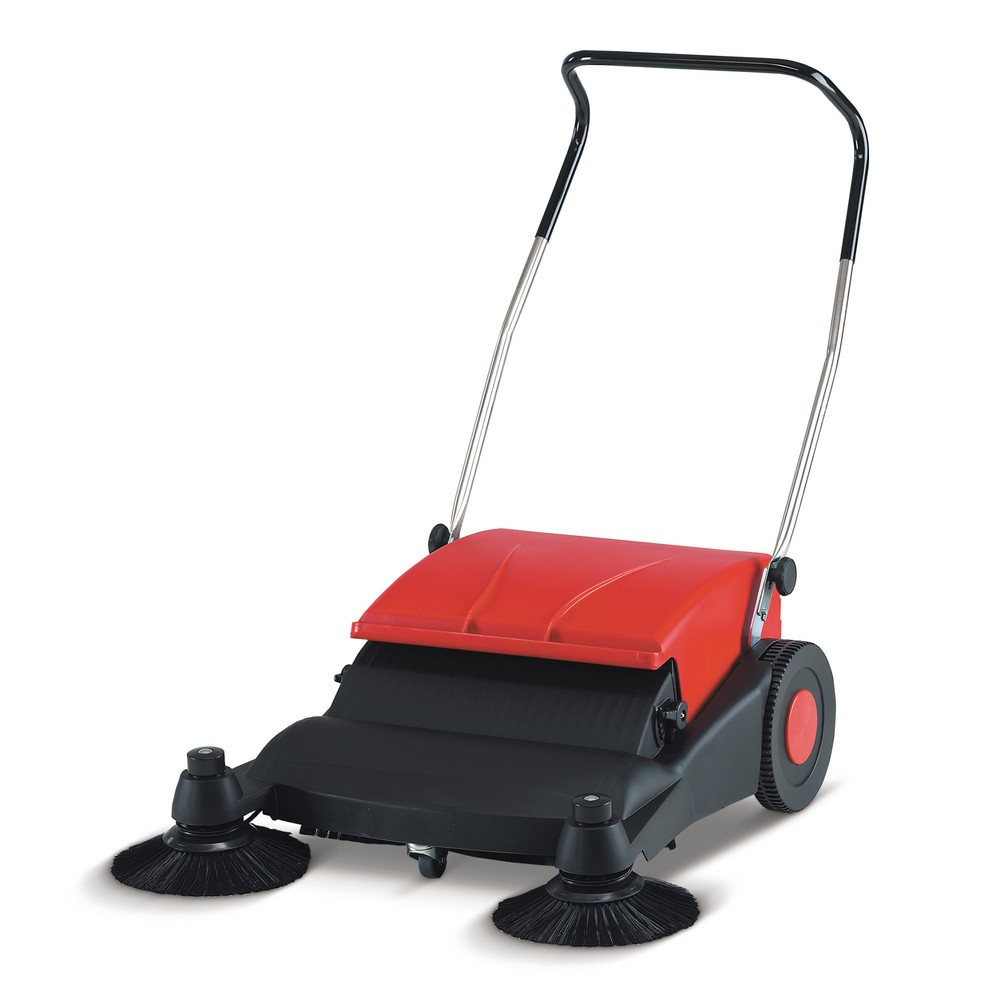 | 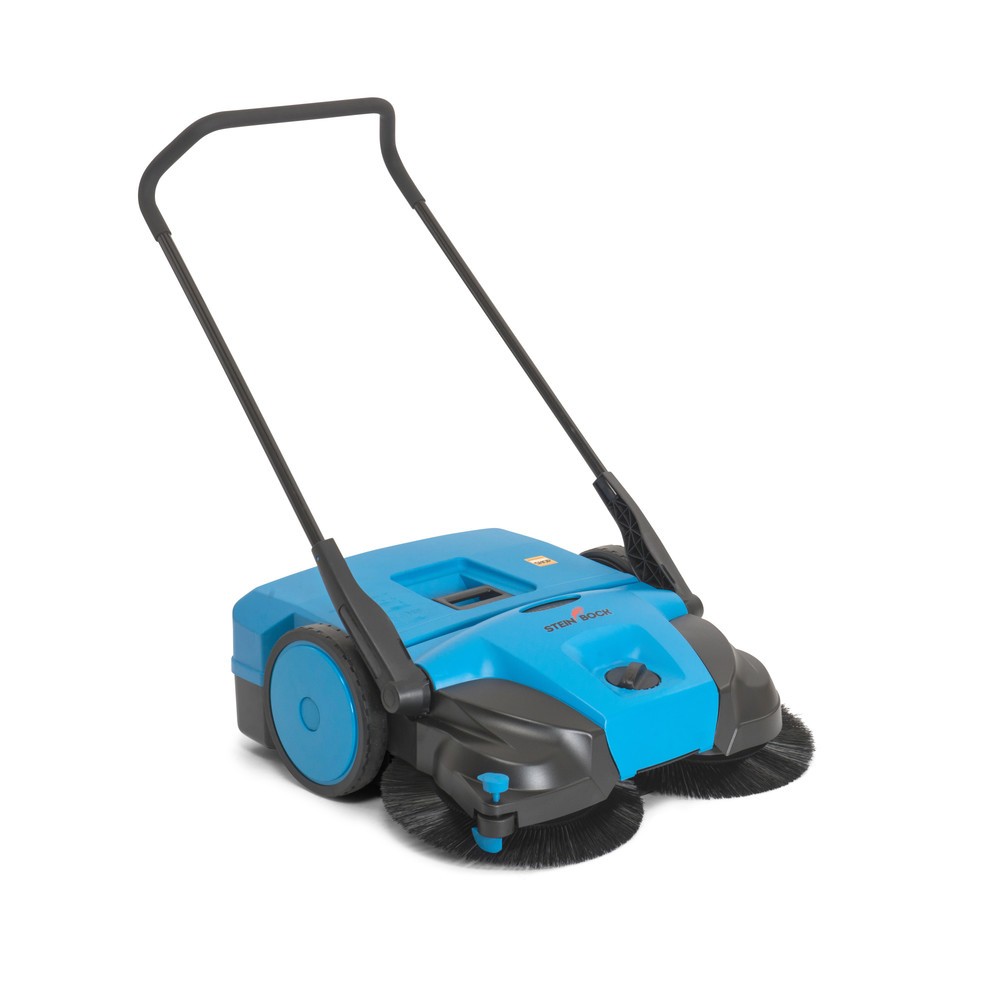 | |
| Surfaces | Tiles, wood parquet, low pile carpets, vinyl and PVC flooring, smooth stone floors |
Hard floors, asphalt, concrete, flagstones, tiles, paving stones, walkways, carpets and rugs, parquet, etc. |
Laminate, parquet, hard floors, asphalt and concrete surfaces, stone floors, tiles, paved paths, carpets, carpeting, etc. |
| Types of dirt | House dust, lint, crumbs, small stones and pebbles, shavings, animal hair, grit, etc. |
House dust, lint, crumbs, small stones and pebbles, shavings, animal hair, grit, cigarette butts, leaves, dry substrate, etc. |
House dust, lint, crumbs, stones and pebbles, shavings, animal hair, grit, cigarette residues, leaves, dry substrate, limited damp leaves and snow |
| Sweeping width | 150–370 mm |
400–800 mm |
400–1,000 mm |
| Dirt tank volume | 0.4–7 l |
15–50 l |
25–50 l |
| Surface cleaning performance | up to 1,200 m²/h |
up to 2,300 m²/h |
up to 3,500 m²/h |
| Brush rollers | × | × | × |
| Side brushes | × | × | × |
| Brush roller side broom combination | × | × | × |
| Average weight | 10 kg |
12.5 kg |
18.5 kg |
| Application | Light and compact sweeper for occasional cleaning |
Practical combination of entry-level and professional model |
Ideal cleaning equipment for indoor and outdoor sweeping |
Professional hand sweepers
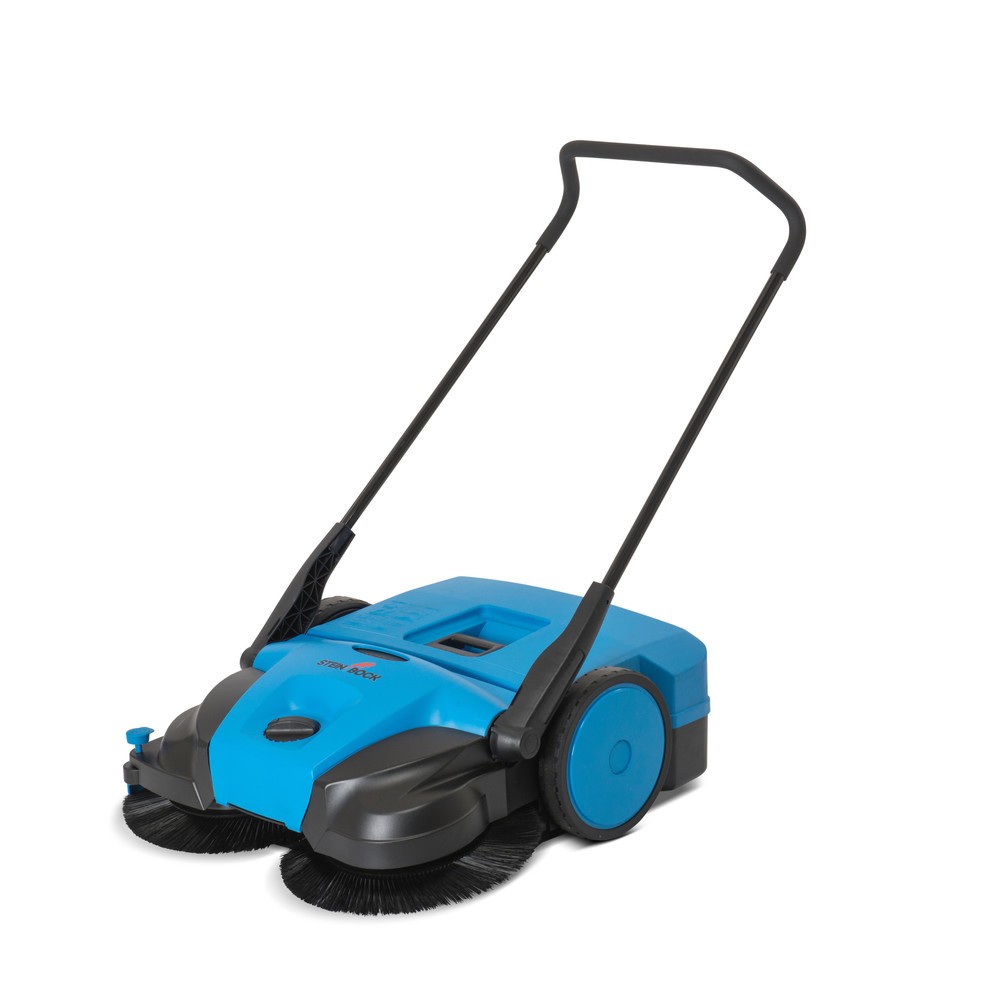
Large, professional class hand sweepers are suitable for cleaning extensive areas. The pick-up tanks hold a large volume of dirt, which is fed through the side brushes and roller brush. Special filters ensure that no fine dust can escape. Manual hand sweepers can be used to conveniently remove dry leaves, grit and sand from paths or shavings and paper debris from factory floors. Despite the high dead weight, you can move the manual sweepers smoothly and precisely with the driving handle.
| Advantages | Disadvantages | |
|---|---|---|
|
|
4. FAQ for hand sweepers
A hand sweeper is ideal if you occasionally want to clean small and medium-sized areas with moderate soiling. In addition, the more compact hand sweepers are easy to store. Manual sweepers are also particularly inexpensive to purchase and maintain.
To achieve the best cleaning results with a hand sweeper, the walking speed should be between three and five km/h. If you walk too fast with the sweeper, you may damage the floor and the brooms and brushes may kick up a lot of dust. If, on the other hand, you move too slowly, the rotation of the brushes may not be sufficient to pick up all the dirt.
After you have finished the work cycle, you should also make sure that the brush roller and disc brushes, as well as the collection container, are clean and not stuck together. If necessary, you can rinse the parts with the help of a water jet and a suitable cleaning agent.
You can comfortably clean areas between 500 and 3,500 m² per hour with a hand sweeper. However, for a larger area, motorised sweeper models such as petrol sweepers or ride-on sweepers are more suitable. Surfaces that can be cleaned with a hand sweeper include:
- Asphalt and concrete floors, such as pavements or roads
- Paved driveways and yards
- Tiles, hard floors, and indoor carpets

